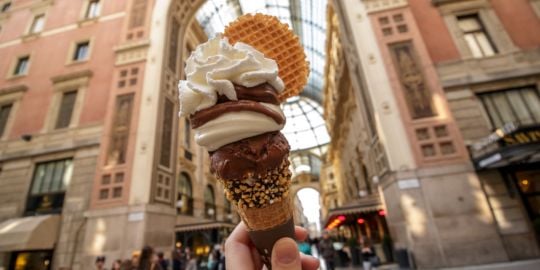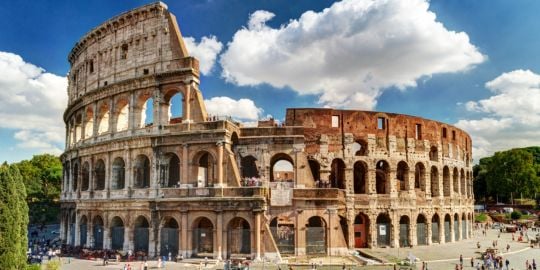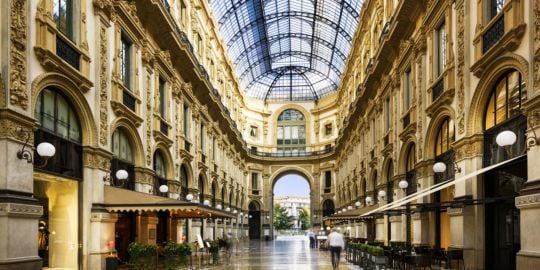Hi,
What do you think of the way people drive in Italy? How different is it from your home country?
Respecting the road safety rules, driving etiquette such as general courtesy, speed excess… what are the characteristics of the driving style in Italy?
Share with us the difficulties one may face when driving in Italy: peak hours, road conditions, accident, etc. and your advice to drive safely in the country.
Thank you in advance for participating,
Maximilien
Driving in Italy
When there's two lanes (or more) on the highway, Italians drive in the middle. So on the line instead of in between. Also, when there is three lanes, they all drive in the middle one, even if the right one is completely empty!!
What irritates me: when I'm driving on a main road and a car from a crossing road is approaching, it breaks very late. So I almost hit my own breaks every time because I'm scared they won't stop.
What's weird on Italian roads: traffic lights in 'small' crossings (but also big ones) don't have a separate light for turning left. So when it's green you drive up until the middle of the crossing with your turning light on, wait for the opposite cars to pass you (going straight on) and when they're all gone you turn left. But sometimes it takes so long to wait that the other peoples lights turn green already. Chaos!!
Oh and the smaller roads are really bad.. They have so many holes in them it seems like you're in a carnival ride. The sidewalks are even worse! Tree roots sticking out and lifting up tiles and asphalt. It's impossible to walk on a sidewalk with a baby in a stroller
Turin has a lot of people from the south so the style ranges from really bad to 'O my goodness, did you see what he just did?'. Although no one has the intention of killing you they might do it by mistake.
I've lived here a long time and I drive a lot so I've learned to spot the dangers and shake my head in disbelief.
What are indicators for?
Why waste energy indicating before turning when you can do it all in one movement? Saving energy is good but the first warning you have that they are about to turn is when they hit their brakes, then they start to turn and then maybe use their indicator at the same time.
Following too closely.
The people from Turin - Torinese - look down on the people from Cuneo as when money started to flow more easily people in Turin bought Fiat 500s but in the agricultural areas of Cuneo people bought tractors. This gave them a reputation for being bad driver (words like - 'pot', 'kettle' and 'black' spring to mind). But one of the worst of the Cunese traits is following too closely. A few metres is not unusual, even at high speed. Everyone I've ever met here has at least one story of how they lost their car because they crashed into the car in front.
What are the white lines on junctions for?
When you're on a minor road joining a major road most people might have been wrongly taught that your car shouldn't go across the line but in Italy the white line should line up with you dash board, that's why you glue a Mary or Padre Pio on it - good luck comes to driver that lines them up at high speed like an F1 car stopping on a pit stop. It's just not good luck for the poor git on the motorcycle traveling on the major road that just hit the side of the car. The driver will realise the protection Padre Pio gave as he had the forethought to buy a car with side airbags.
It's never your fault.
A friend was telling me that he was waiting in the queue to pay the toll on a motorway when a car hit the rear of his car and somersaulted over him. The driver (a 25 year old girl.. the worst in my opinion) claimed it was his fault. She was on the phone and didn't realise the traffic had stopped. Never claim liability and if your car isn't damaged and you're not injured, leave quickly.
Don't worry about others when you're lost.
I swear I once saw a car reversing around a very busy roundabout because he'd missed his turning. Why the thought hadn't occurred to him that he could go around again, I'm not sure. But this well illustrates an important point - Italians wont consider you when they're not sure where they're going. Keep a good distance and expect the worst. When you do keep a distance of more than half the length of a Fiat Panda the car behind you will consider it a waste of space so will overtake and attempt to fill it. So, you will find yourself actually moving backwards in the traffic but it's probably safer.
I love driving in Italy, it's not so bad or unsafe, you just have to drive with a lot of care and consider that the other driver might do the most ridiculous thing - because he probably will.
Hi there!
Aren't they insane?!
On the way to the airport in Italy one day I decided that I'd write a driving guide for foreigners because I was just so gobsmacked by how they drive so if you're interested, take a look at my illustrated guide!!!
http://lemarchescape.com/2015/04/18/ita … oreigners/
Sue x
when you are drving aroung town ect . remmber to give way to car on your right , also the cars coming up the wrong way of a oneway road that will be on your left the arrows could be mis read you could think they tell two way but its telling you you can go down one aqnd up the other
It seems as though there are 2 speeds on the roads here - very fast and very slow. It seems the exception to follow or be followed by another car diving the appropriate speed. The fast folks try to intimidate you first by driving up your tail pipe hoping to intimidate you to increase your speed. If you do not, they overtake you. The slow drivers are a danger because they drive so slowly so as to force you to pass them. Whenever one car is passing another, it poses a risk.
slh43
Wrote a post on this subject.... 
Here is my advise and the original post if you are looking for the corresponding photos: http://vinovitaviaggi.com/2015/04/17/a- … -in-italy/
A Guida Guide – The Ultimate Guide for Driving in Italy
Many people are fearful of driving in Italy. I admit I was one of them. Growing up in Texas where we have lots of space, are overly hospitable and have something called lanes, I was terrified of driving in Milan. Not only are there cars on the streets in Milan, but people, cyclists, scooters and trains. Ok, they are really trams, but in my mind, having to compete with something riding along tracks when I don't even have a lane, seems like a train. Of course a lot of my fear stems from the USA and European differences. Probably someone coming from Amsterdam would not be freaked out by the trams, but still might be scared to drive in Italy. So here is a a guide of what to expect driving in Italy.
GENERAL
You must drive with your lights on when driving outside urban areas and are required to wear a seat belt. Unlike in the United States, you cannot make a right turn on a red light. Roundabouts are big in Italy. You always yield to the cars already in the roundabout and cars coming from your left. You can use your cell if you have a hands-free device. I am assuming texting is also forbidden, but I am not sure about this one because I so often see the bus drivers doing it while driving.
Geographically speaking (and this is only based on my personal experiences), driving in the north seems to be easier than in the south. The farther down south you go, the more relaxed drivers seem to be with the rules – as in stopping at a Stop sign is mandatory.
CITY and TOWNS
As mentioned above, you will be sharing the road with pedestrians, trams, buses, scooters, cyclists and fellow drivers. Often there are no designated lanes. Sometimes what seems like a two lane street will have a row of three cars. Speaking of rows, double and triple parking is common especially in cities like Naples and Rome. If you find yourself boxed in, just honk a few times and the guy drinking his coffee will come out and move his car. And since we are on the subject of honking, sometimes when there is a two-way street, but clearly only enough room for one car to fit, you will hear honking. This is an oncoming car warning you they are coming. The honk method is used for any situation in which two drivers cannot see each other.
Note that in most larger cities, traffic is limited in the historic center.
Driving Culture in the City
Italians are patient drivers when relationships are involved. What does this mean? Well, if you are driving to the market and you see your friend on the street, of course you are going to stop right in the middle of the street, roll your window down and have a little chat. The cars that start building up behind you will allow you a small exchange of words. This kind of thing just does not bother them. So, if someone is blocking the traffic to chat for a few seconds, resist the urge to honk.
INTERSTATES – AUTOSTRADA
Unlike the interstates in the United States, the Autostrada is a toll system. Yes, in Italy you have to pay to go fast. How fast you might ask? The speed limit is 130 for the Autostrada and 110 on main highways. The Autostrada will be noted by a green sign and the regular highway will be designated by a blue sign. Now back to the money situation. If you are trying to budget toll costs for your trip, have a look at viamichelin.com. As an example, going from Milan to Rome which is 350 Miles, will cost approximately 40 euro.
Most toll roads require that you take a ticket and pay at the exit. At times, you just pay a set amount to enter. For the first type of toll road, upon entering, just take a ticket – and don't lose it! If you do, the toll to be paid will be calculated from the farthest station of entry. When you exit, you can pay cash (noted with a sign showing coins) or pay with a credit card (noted with a sign that says: “Carte”. The credit card booth with usually have a much shorter line. Make sure you do not enter the Telepass line as that is reserved for those with a monthly subscription.
Driving Culture on the Autostrada
I have heard people say that they think Italian drivers are aggressive bullies on the freeways, and the truth is they are not. But there are certain rules you need to be aware of. The left lane is used for passing. If you linger around in that lane you might run the risk of having a driver tailgate you and even flash his brights. The truth is, they are not really being rude, they just want to make their presence known and want you to move aside. So don't be insulted, just move over so they can get by. Don't pass on the right. If you do this, you are looking for trouble.
Autogrill. Ah the Autogrill. This is one of my favorite parts of the Italian road-trip. The Autogrill is a restaurant, but oh so much more. They are difficult to describe. There is a bar for coffee, a restaurant, but also shopping. Yes, food shopping at the rest stop – like foodie food shopping. My descriptions cannot do the place justice, so to read more about the Autogrill, have a look at these two articles: www.thisnewview.com and www.bbc.com.
PARKING
As discussed above, public parking and parking lots will be designated with the “P” sign. These areas are paid parking and the parking spots will be designated with blue paint, as in the photo below. If you find white parking spots, those are free. The yellow is parking only for residence of the area. When you have to pay for parking, typically there will be a meter nearby. (photo below) Head on over to the parcometro (love that word), pay the meter for the amount of time you wish to park, then put the ticket on your dash reflecting your time. Sometimes you have to pay using a scratch card that can be bought at nearby cafes'.
You might also see the “P” with a little timer below it. This means parking is free, but you have to set the time you arrive using the little disk found on your front windshield. You set the time you leave the car and have one hour from that time to make it back to the car. The parking lines will be painted white since this parking is free.
Driving Culture When Parking
Sometimes you will find NO parking at all. In this case, if you just have to run into a place very quickly, you can usually park in a restricted area or double park leaving your emergency lights on. Obviously I don't want to encourage any illegal activity! However, this is the way the Italians do it – especially in places like Rome and big cities.
PRACTICAL INFO
Renting a Car in Italy
One of the best option for car rentals in Italy: www.autoeurope.com.
Drivers Licences Requirements in Italy
If you have a license issued by an EU country, you can drive in Italy without obtaining an International Driving Permit. If you come from a country outside the EU, you will need an International Driving Permit obtained from a place like AAA (for Americans).
Getting Around
A navigator is especially useful and handy. However, consider bringing and old-fashioned map too. I learned this lesson from my big sis on a long road-trip we made with five kids. She had asked me if I had a map, and I admit I laughed in her face….”who needs the map when we have the navigator?” Well it seems big sisters know a thing or two more about life than us younger sisters, because on that trip, we lost all of our connections: for the phones and the navigators. It was such a pleasure driving around lost in Southern Italy with five kids, three of whom were throwing up – SUCH a pleasure. Now I never take a trip without a real map.
So that is it! Happy trails!!!
Driving in Italy? There's an old saying, probably in one form or another in every country in the world.
"If everyone is crazy, then you're crazy too." And somehow, that works for Italian drivers. I've lived here off and on for years and have yet to see a really serious accident. Some fender-benders, yeah, but nothing serious.
To be completely honest, I always felt completely at home driving in Italy and am looking forward to returning to it. Transitioning back to U.S. drivers was like switching from espresso to decaf, from hanging with the cool kids to living in a geriatric ward. American drivers are incredibly bad, have slow reflexes, are either passive-aggressive or have anger management issues. I also hate the fact that there are so many sexually inadequate men in giant trucks with tractor tires.









